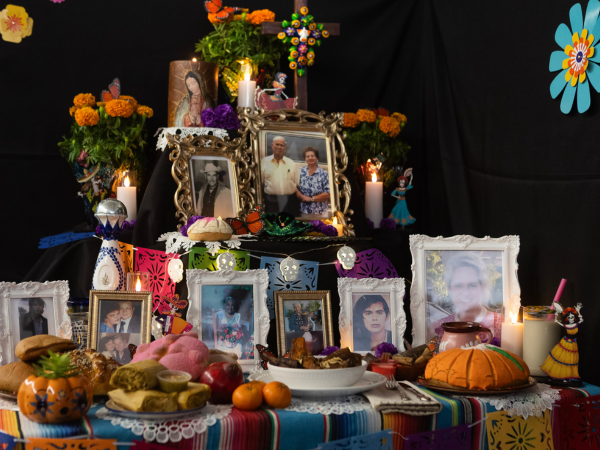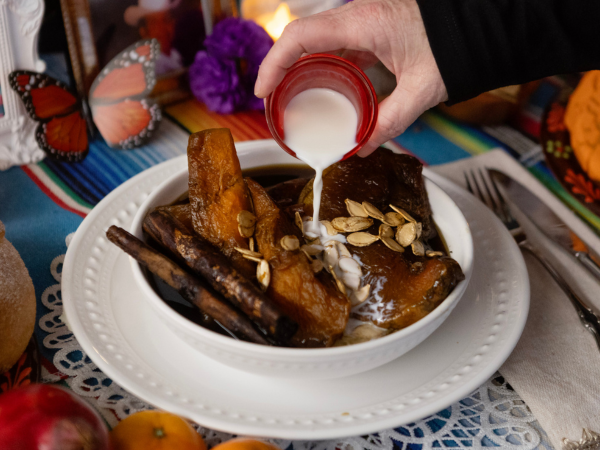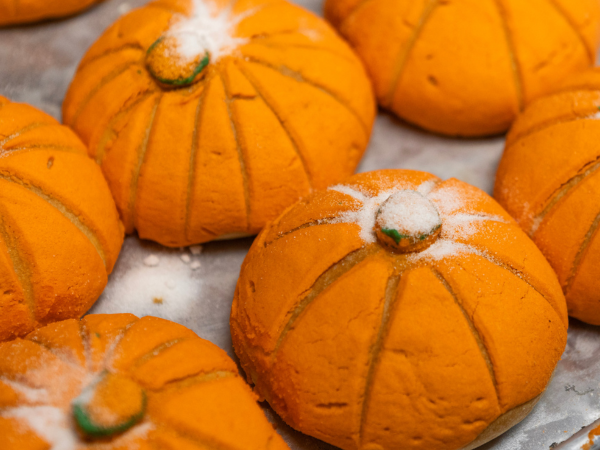Our Friends at Estrella De Mexicali are cooking up delicious and traditional eats for Día de los Muertos — a time to remember and celebrate the lives of loved ones who have died.
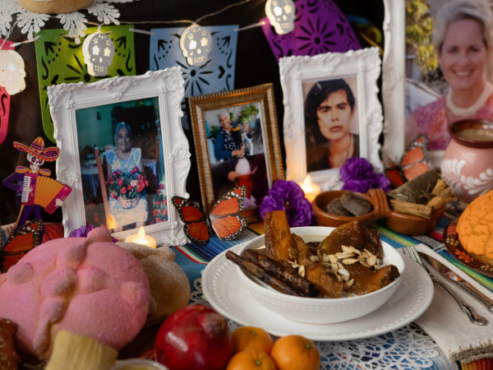
THE STAFF AT ESTRELLA DE MEXICALI IN GARDEN GROVE PUT TOGETHER AN OFRENDA (ALTAR) TO HONOR THEIR DECEASED LOVED ONES FOR DÍA DE LOS MUERTOS. PHOTO BY DREW KELLEY/DIOCESE OF ORANGE
In various parts of Mexico and in other areas that have adopted the tradition, Día de los Muertos, or Day of the Dead, is celebrated on Nov. 1 and 2.
In preparation for Día de los Muertos, staff at the Garden Grove eatery recently set up the traditional ofrenda (altar) to remember loved ones who have passed.
And if their loved ones have yet to cross over to their final destination, there’s different things on the altar that help them along their journey.
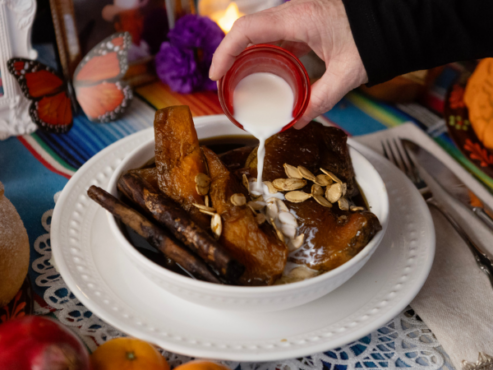
MILK IS POURED OVER A SEASONAL FAVORITE, CALABAZA EN TACHA, OR CANDIED PUMPKIN. PHOTO BY DREW KELLEY/DIOCESE OF ORANGE
One is the protection of the Virgin Mary.
Two is a glass of water in case they get thirsty.
The staff at Estrella De Mexicali added a wooden cross with hand crafted décor from Oaxaca, an indigenous state in Mexico.
There are also food items — usually favorite foods loved ones enjoyed while alive.

CONCHAS, KNOWN AS “SOUL BREAD” ARE DECORATED LIKE PUMPKINS AT ESTRELLA DE MEXICALI IN GARDEN GROVE.
Since we are headed into fall traditions and Christmas, Blanca Hurtado, owner of Estrella De Mexicali, said altars will feature lots of tamales, pan de muerte (Day of the Dead Bread) which resembles the bones and the body and conchas (soul bread).
Marigolds, the traditional flower of the dead, are also featured prominently on the altars in addition to photos of deceased loved ones.
Other items include:
Champurrado, a traditional hot chocolate drink made of corn masa mixed with three different types of milk, cinnamon, piloncillo (Mexican brown sugar) and Mexican chocolate.
A seasonal favorite is calabaza en tacha, or candied pumpkin, made in central and southern parts of Mexico.
Hurtado said that in northern areas of Mexico, the pumpkin is candied differently with more of a drier texture.
CALABAZA EN TACHA: WHAT YOU’LL NEED
Wash whole pumpkin and cut into slices, leaving the skin on.
Add water to the bottom of a large cast iron pot and arrange the pumpkin slices
inside.
Add cinnamon and hard brown sugar and let cook for 40 to 60 minutes.
The seeds (pepitas) can either be cooked with the pumpkin or removed and toasted in the oven separately for about 35 to 40 minutes.
Hurtado said vanilla or star of anise may be added, but the traditional way is just with water, cinnamon and brown sugar.
“It’s just beautiful,” she added.
The traditional way to eat calabaza en tacha is warm, fresh off the stove.
“However, my preference is cold with a dollop of whipped cream,” Hurtado added. “It’s wonderful.”
Estrella De Mexicali is proud to serve real whipped cream imported from Mexico.
There’s a nice caramelization that comes from the brown sugar, and “often people will add milk, so it becomes a cream based, soupy pumpkin dish,” she said.
“Though it’s a popular way to eat it, we don’t sell it that way because of the milk, so we give it to customers on the side.”
Estrella De Mexicali is located at 12859 Chapman Ave., Garden Grove. For more info call 714-621-0180 or visit https://www.mexicanbakerygardengrove.com/

